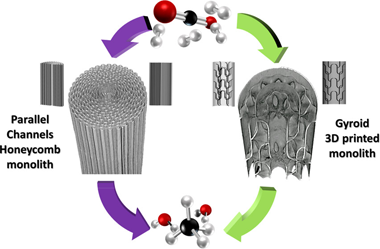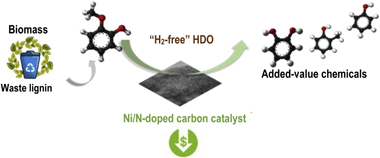Artículos SCI
2021
2021
Materiales Ópticos Multifuncionales - Materiales Coloidales
Highly Versatile Upconverting Oxyfluoride-Based Nanophosphor Films
Ngo, TT; Cabello-Olmo, E; Arroyo, E; Becerro, AI; Ocana, M; Lozano, G; Miguez, HACS Applied Materials & Interfaces, 13 (2021) 30051-30060
Show abstract ▽

Fluoride-based compounds doped with rare-earth cations are the preferred choice of materials to achieve efficient upconversion, of interest for a plethora of applications ranging from bioimaging to energy harvesting. Herein, we demonstrate a simple route to fabricate bright upconverting films that are transparent, self-standing, flexible, and emit different colors. Starting from the solvothermal synthesis of uniform and colloidally stable yttrium fluoride nanoparticles doped with Yb3+ and Er3+, Ho3+, or Tm3+, we find the experimental conditions to process the nanophosphors as optical quality films of controlled thickness between few hundreds of nanometers and several micrometers. A thorough analysis of both structural and photophysical properties of films annealed at different temperatures reveals a tradeoff between the oxidation of the matrix, which transitions through an oxyfluoride crystal phase, and the efficiency of the upconversion photoluminescence process. It represents a significant step forward in the understanding of the fundamental properties of upconverting materials and can be leveraged for the optimization of upconversion systems in general. We prove bright multicolor upconversion photoluminescence in oxyfluoride-based phosphor transparent films upon excitation with a 980 nm laser for both rigid and flexible versions of the layers, being possible to use the latter to coat surfaces of arbitrary shape. Our results pave the way toward the development of upconverting coatings that can be conveniently integrated in applications that demand a large degree of versatility.
Junio, 2021 | DOI: 10.1021/acsami.1c07012
Reactividad de Sólidos
Paving the Way to Establish Protocols: Modeling and Predicting Mechanochemical Reactions
Gil-Gonzalez, E; Perez-Maqueda, LA; Sanchez-Jimenez, PE; Perejon, AJournal of Physical Chemistry Letters, 12 (2021) 5540-5546
Show abstract ▽
Parametrization of mechanochemical reactions, or relating the evolution of the reaction progress to the supplied input power, is required both to establish protocols and to gain insight into mechanochemical reactions. Thus, results could be compared, replicated, or scaled up even under different milling conditions, enlarging the domains of application of mechanochemistry. Here, we propose a procedure that allows the parametrization of mechanochemical reactions as a function of the supplied input power from the direct analysis of the milling experiments in a model-free approach, where neither the kinetic model function nor the rate constant equation are previously assumed. This procedure has been successfully tested with the mechanochemical reaction of CH3NH3PbCl3, enabling the possibility to make predictions regardless of the milling device as well as gaining insight into the reaction dynamic. This methodology can work for any other mechanical reaction and definitely paves the way to establish mechanochemistry as a standard synthetic procedure.
Junio, 2021 | DOI: 10.1021/acs.jpclett.1c01472
Química de Superficies y Catálisis
Stepping toward Efficient Microreactors for CO2 Methanation: 3D-Printed Gyroid Geometry
Baena-Moreno, FM; Gonzalez-Castano, M; de Miguel, JCN; Miah, KUM; Ossenbrink, R; Odriozola, J.A.ACS Sustainable Chemistry & Engineering, 9 (2021) 8198-8206
Show abstract ▽

This work presents a comparative study toward the development of efficient microreactors based on three-dimensional (3D)-printed structures. Thus, the study evaluates the influence of the metal substrate geometry on the performance of structured catalysts for the CO2 methanation reaction. For this purpose, the 0.5%Ru-15%Ni/MgAl2O4 catalyst is washcoated over two different micromonolithic metal substrates: a conventional parallel channel honeycomb structure and a novel 3D-printed structure with a complex gyroid geometry. The effect of metal substrate geometry is analyzed for several CO2 sources including ideal flue gas atmospheres and the presence of residual CH4 and CO in the flue gas, as well as simulated biogas sources. The advantages of the gyroid 3D complex geometries over the honeycomb structures are shown for all evaluated conditions, providing in the best-case scenario a 14% improvement in CO2 conversion. Moreover, this contribution shows that systematically tailoring geometrical features of structured catalysts becomes an effective strategy to achieve improved catalyst performances independent of the flue gas composition. By enhancing the transport processes and the gas-catalyst interactions, the employed gyroid 3D metal substrates enable boosted CO2 conversions and greater CH4 selectivity within diffusion-controlled regimes.
Junio, 2021 | DOI: 10.1021/acssuschemeng.1c01980
Reactividad de Sólidos
Kinetic study of complex processes composed of non-independent stages: pyrolysis of natural rubber
Perejon, A; Sánchez-Jiménez, PE; García-Garrido, C; Pérez-Maqueda, LAPolymer Degradation and Stability, 188 (2021) 109590
Show abstract ▽
In this work, it is proposed a method for studying kinetics of complex processes composed of non-independent stages. In this method, the variable contribution of the different stages as a function of the heating schedule is taken into account. The method involves the simultaneous kinetic analysis of a set of experimental data registered under linear heating rate conditions, without any previous assumptions regarding the kinetic models followed by the stages or their corresponding activation energies.
The method has been tested with the kinetic analysis of the pyrolysis of natural rubber, since the kinetics of this process is complex and depends on temperature and heating schedule. It is demonstrated that the behavior of the experimental curves can be accurately predicted with the kinetic parameters calculated by the proposed methodology.
The kinetic analysis presented here could be applied to other complex processes as those found in pyrolysis, without the need of using oversimplified kinetic models that could yield significant errors when used in real applications.
Junio, 2021 | DOI: 10.1016/j.polymdegradstab.2021.109590
Química de Superficies y Catálisis
In-situ HDO of guaiacol over nitrogen-doped activated carbon supported nickel nanoparticles
Jin, Wei; Pastor-Perez, Laura; Villora-Pico, Juan J.; Mercedes Pastor-Blas, M.; Odriozola, Jose A.; Sepulveda-Escribano, Antonio; Ramirez Reina, TomasApplied Catalysis A-General, 620 (2021) 118033
Show abstract ▽

In-situ hydrodeoxygenation of guaiacol over Ni-based nitrogen-doped activated carbon supported catalysts is presented in this paper as an economically viable route for bio-resources upgrading. The overriding concept of this paper is to use water as hydrogen donor for the HDO reaction, suppressing the input of external highpressure hydrogen. The effect of nitrogen sources, including polypyrrole (PPy), polyaniline (PANI) and melamine (Mel) on the structural, electronic and ultimately of catalytic features of the designed materials have been addressed. Nitrogen-doped samples are more active than the undoped counterparts in the "H2-free" HDO process. For instance, the conversion of guaiacol increased by 8 % for Ni/PANI-AC compared to that of Ni/AC catalysts. The superior performance of Ni/NC can be attributed to the acid-base properties and modified electronic properties, which favours the C-O cleavage and water activation as well as enhances dispersion of Ni particles on the catalysts' surface.
Junio, 2021 | DOI: 10.1016/j.apcata.2021.118033
- ‹ anterior
- 83 of 420
- siguiente ›














